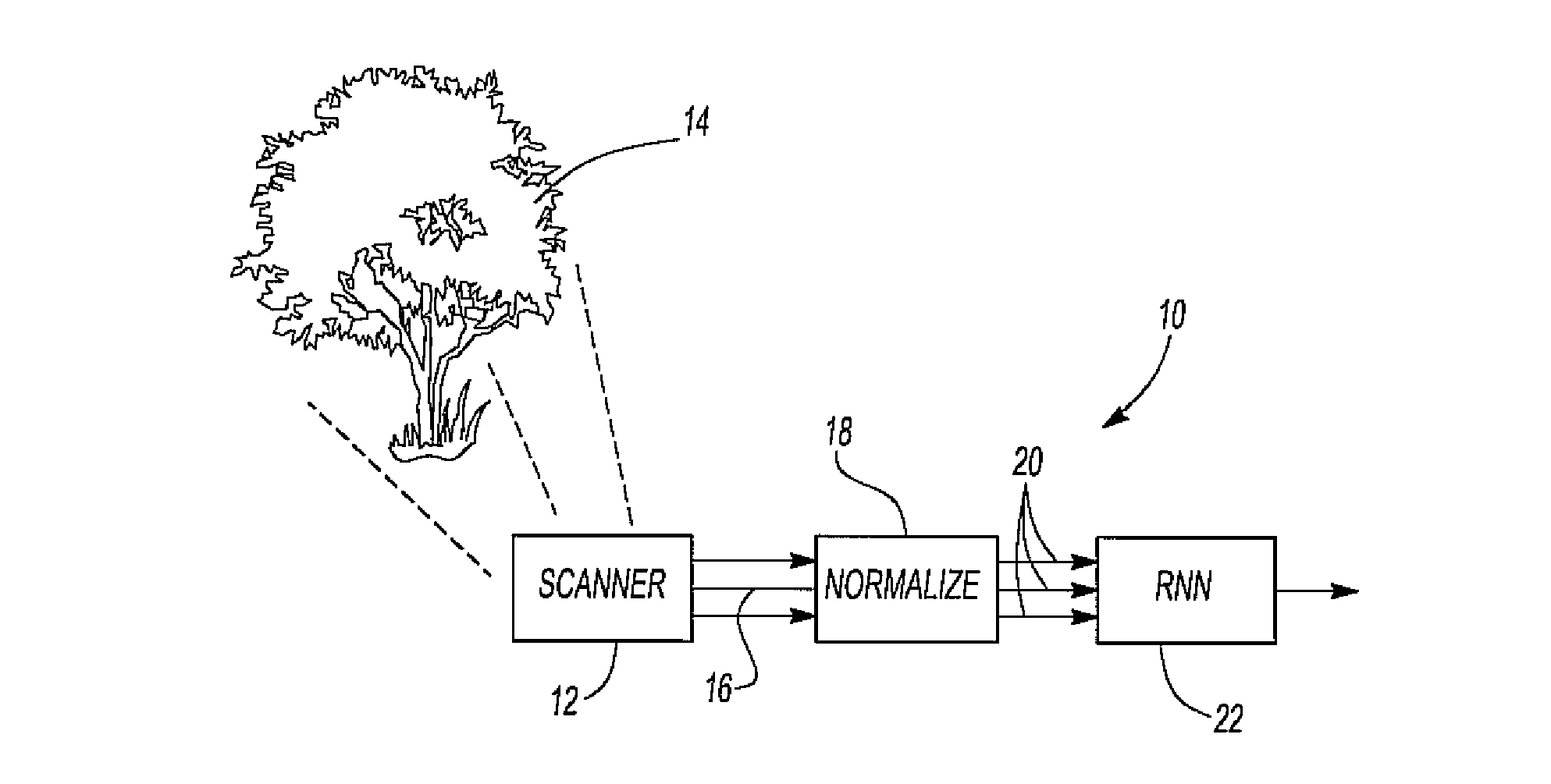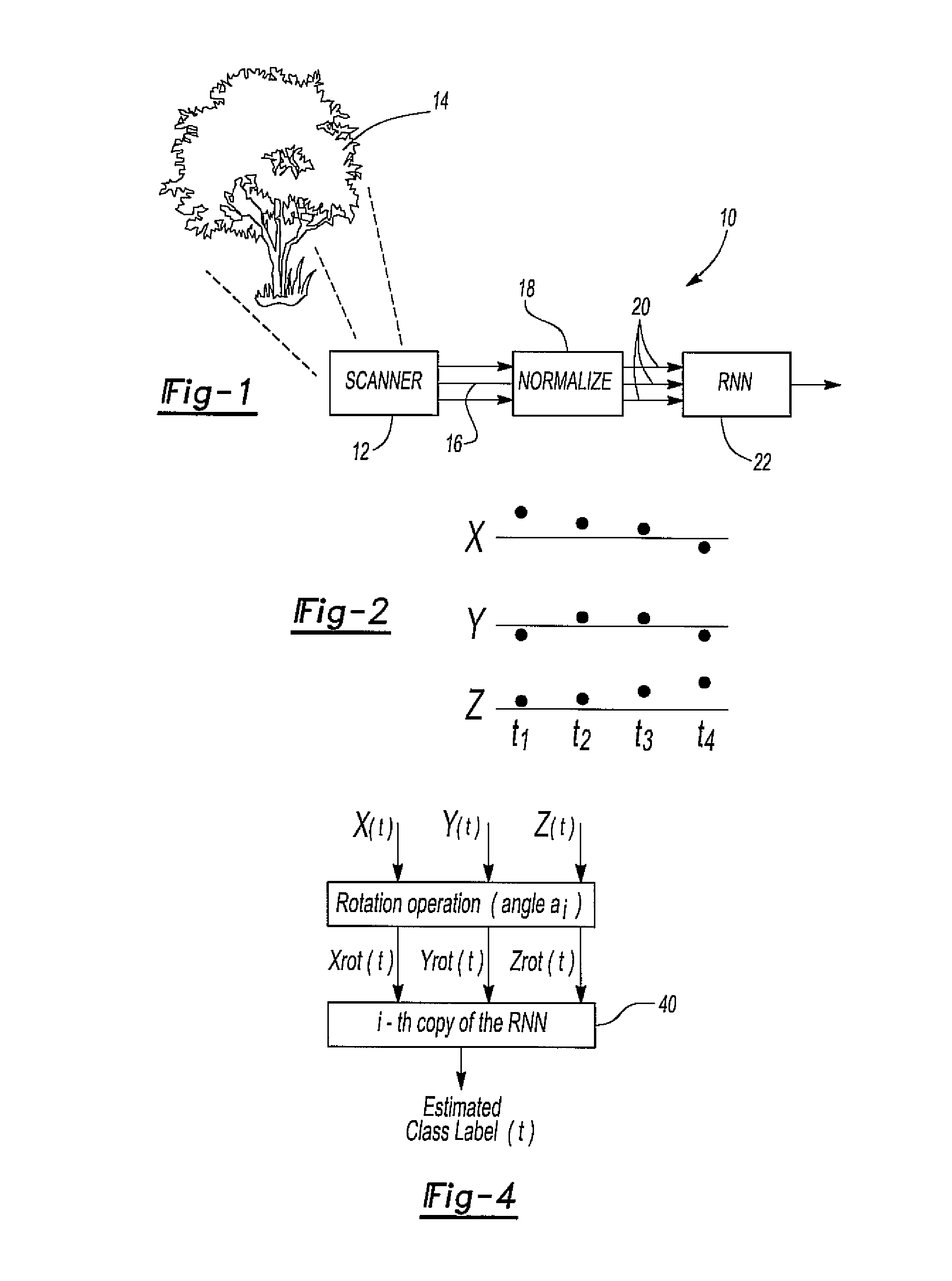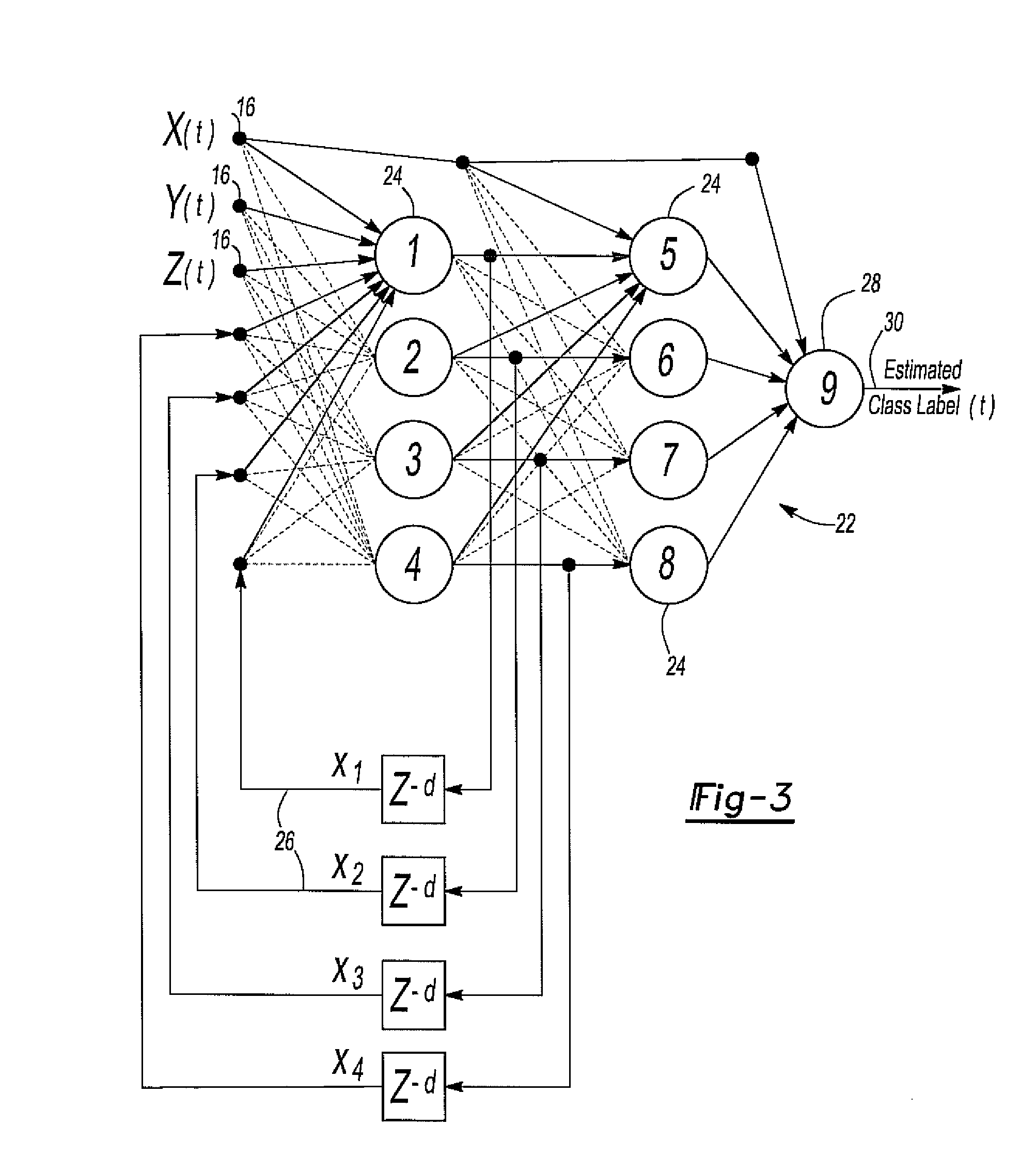Method and system for object recognition based on a trainable dynamic system
a dynamic system and object recognition technology, applied in the field of object recognition system and method, can solve the problems of large number of features, computational complexity of object recognition task, and large number of computational requirements of image processing by camera or other suitable sensor for these previously known object recognition systems
- Summary
- Abstract
- Description
- Claims
- Application Information
AI Technical Summary
Benefits of technology
Problems solved by technology
Method used
Image
Examples
Embodiment Construction
[0017]With reference first to FIG. 1, a preferred embodiment of an object recognition system 10 in accordance with the present invention is shown. A three-dimensional scanner 12 scans an object 14 and generates a temporal sequence of three-dimensional output data on its output 16 representative of the scanned object 14. The preferred scanner 12 is a three-dimensional laser scanner which generates thousands of output data per second representative of the scanned object 14. Other types of multi-dimensional (two- or higher-dimensional) scanners, however, may be utilized without deviation from the spirit or scope of the invention.
[0018]The data from the scanner output 16 is fed as an input signal to a normalizing means 18 which normalizes the data to facilitate processing of the data. The normalizing means 18 may comprise a separate circuit but, more typically, the normalization means is performed by software utilizing processors, such as microprocessors or other types of data processor...
PUM
 Login to View More
Login to View More Abstract
Description
Claims
Application Information
 Login to View More
Login to View More - R&D
- Intellectual Property
- Life Sciences
- Materials
- Tech Scout
- Unparalleled Data Quality
- Higher Quality Content
- 60% Fewer Hallucinations
Browse by: Latest US Patents, China's latest patents, Technical Efficacy Thesaurus, Application Domain, Technology Topic, Popular Technical Reports.
© 2025 PatSnap. All rights reserved.Legal|Privacy policy|Modern Slavery Act Transparency Statement|Sitemap|About US| Contact US: help@patsnap.com



